The
Phonograph and Its Future

Probability:
Toys.
Toys..
-- A doll which may speak, sing, cry, or laugh, may be safely
promised our children for the Christmas holidays ensuing. Every species
of animal or mechanical toy--such as locomotives, etc.--may be supplied
with their natural and characteristic sounds.
When the idea of recording sound first
seemed possible to Edison in mid-July 1877, Edison's initial thoughts
were that it would be used for dictation. According to Patrick Feaster
[1], specialist in the history,
culture, and preservation of sound media, it was a little more than
four months later, in a note dated November 23, when Edison had begun
pondering other scenarios," and the very first idea on his
brainstorming list was this one: "I propose to apply the phonograph
principle to make Dolls speak sing cry & make various sounds also
apply it to all kinds of Toys such as Dogs' animals, fowls reptiles
human figures: to cause them to make various sounds to steam Toy Engine
imitation of exhaust & whistele [sic]."[2]
Feaster provides a comprehensive history
of Edison's talking doll record in his essay "A Cultural History
of the Edison Talking Doll Record" which you can read here.
For the purposes of this gallery Edison's
talking doll of 1890 is an example of Edison's probability
of a "talking doll" becoming a reality, i.e., a doll which
could "speak, sing, cry, or laugh." The doll's cylinder
records were primarily nursery rhymes, a prayer ("Now I lay me
down to sleep") and a song ("Twinkle, twinkle little star").
As recordings these can also be called some of the first entertainment
records ever made.
Since Edison's 1878 probability also
specifically promised a talking doll for "our children for the
Christmas holidays ensuing" an illustration is shown below from
the December 1891 issue of Puck, with an Edison Talking
Doll under the Christmas tree. Although
Edison's doll was a commercial failure it did make its mark in popular
culture.
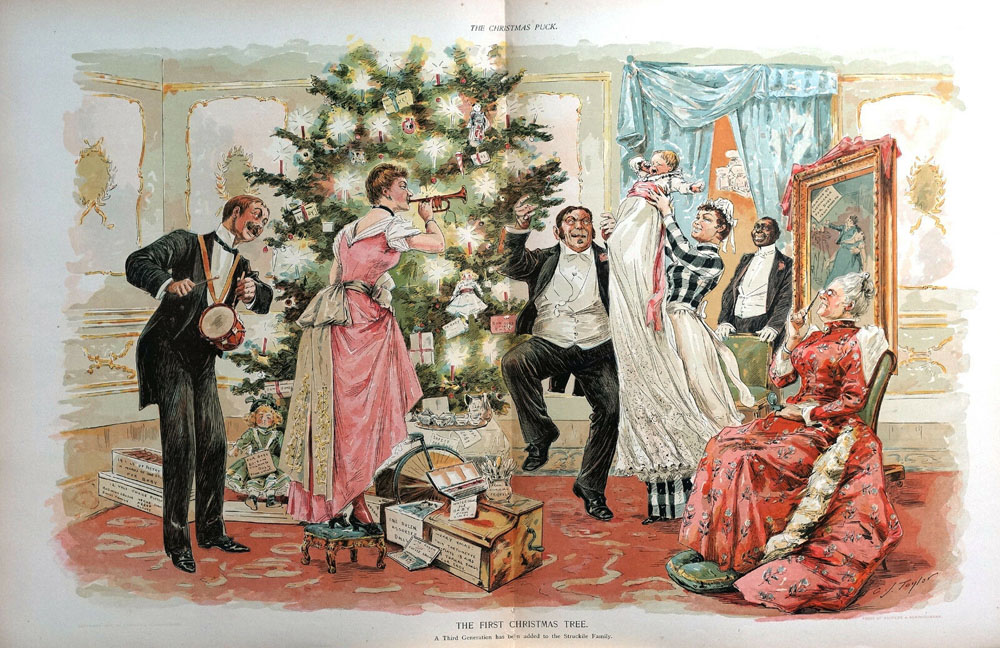
Puck, December
1891 (Source: Phonographia's Collection
of Art and Ephemera)
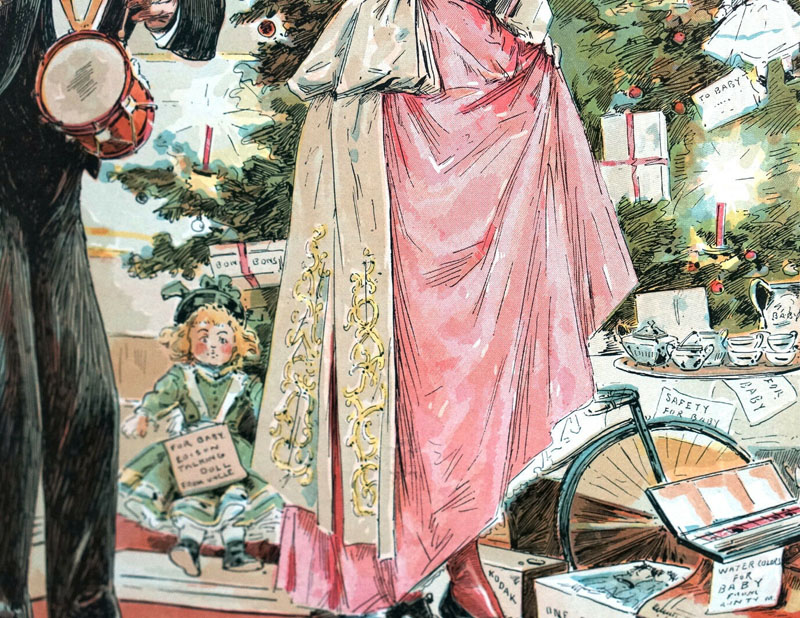
For Baby.
Edison Talking Doll From Uncle
|
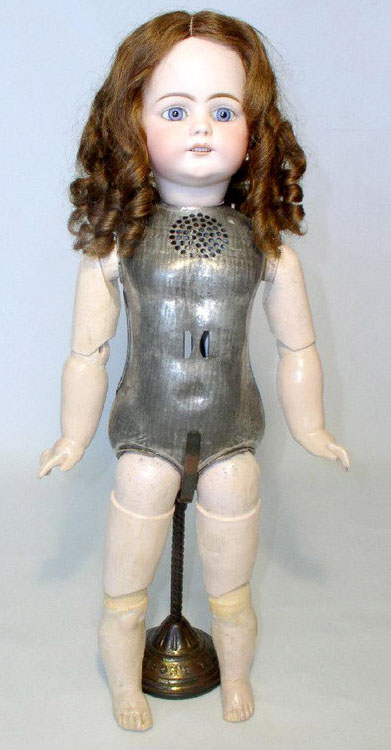

Edison's
Talking Doll (above) 1890 with Schwarz ad from 1890 and Scientific
American's April 26, 1890 article and illustrations about
the manufacturing of Edison's Talking Doll. (right)
|
|
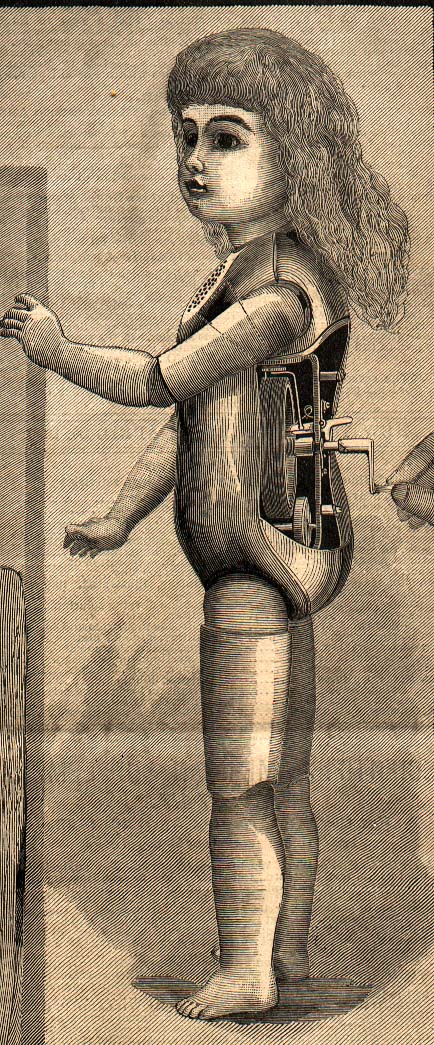 |
LISTEN
to hear a record made for an 1890 Edison Doll of "Twinkle,
twinkle little star" (courtesy of the
National Park Service)
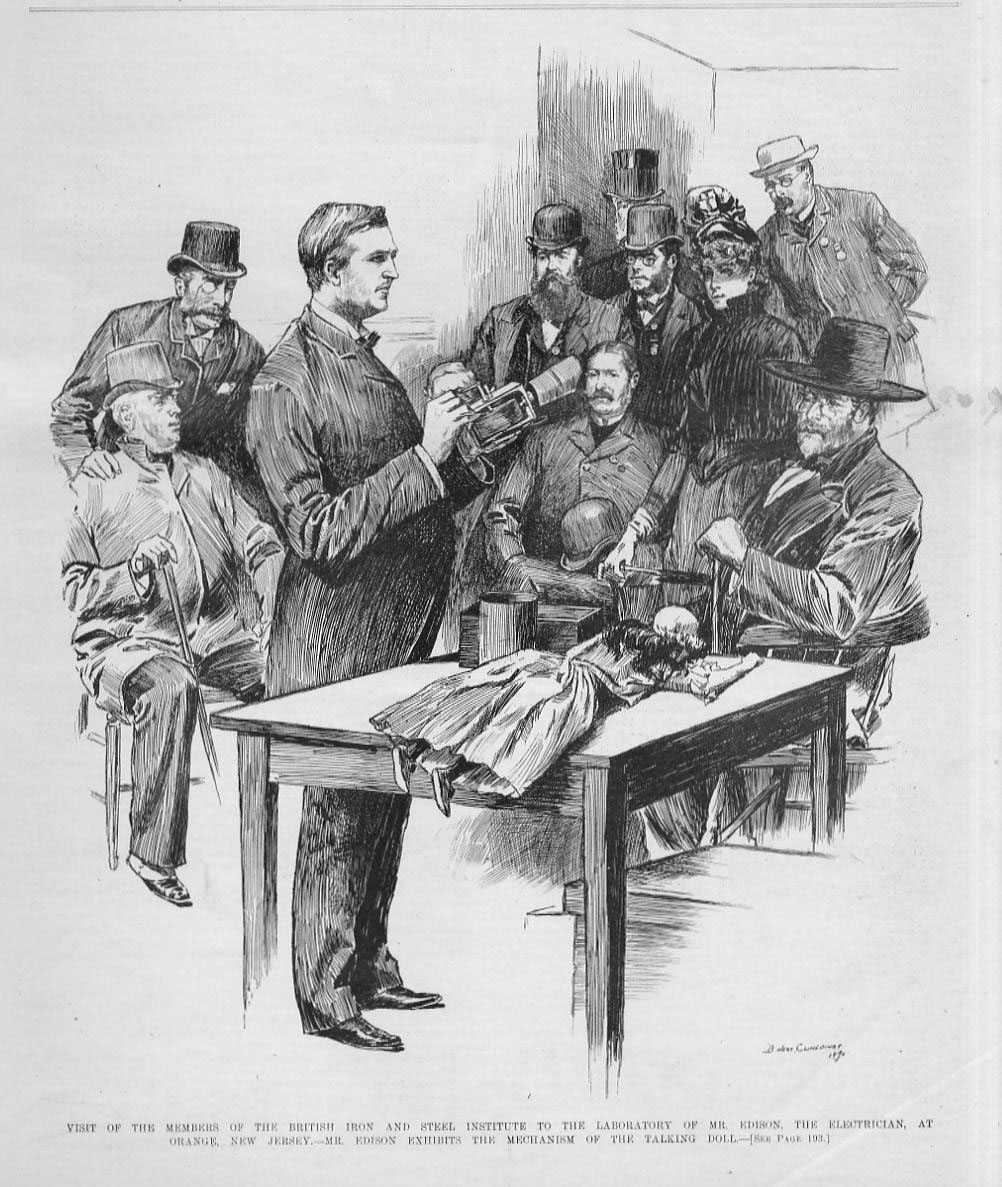
Edison demonstrating the
mechanism of his talking doll, Frank Leslies Illustrated Newspaper,
October 1890
Other talking dolls were
also made at the end of the 19th century and into the twentieth century
such as "Bebe Phonographe" by Emile Jumeau; Madame
Hendren by the Universal Talking Toys Co. ca. 1922; Mae
Starr made by Effanbee ca. 1925), etc.
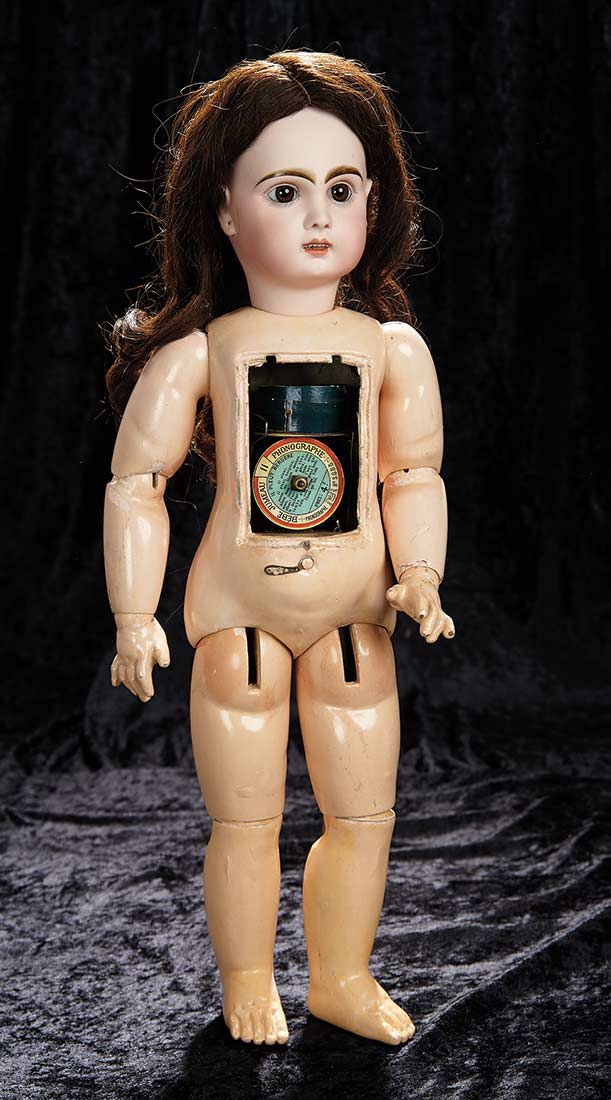
French Bisque "Bebe Phonographe"
by Emile Jumeau with Lioret Mechanism ca. 1895
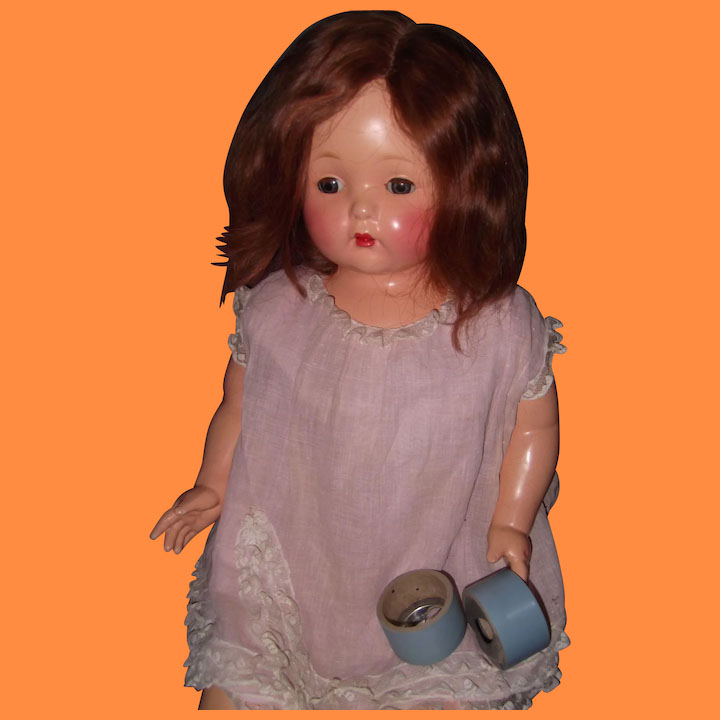
Mae Starr talking doll with cylinder recorders made
by Effanbee, 1928
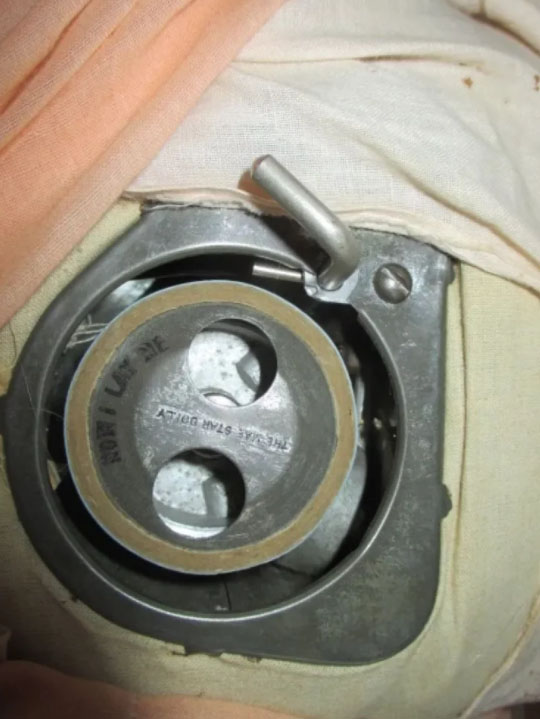
Mae Starr talking doll
mechanism for cylinder record
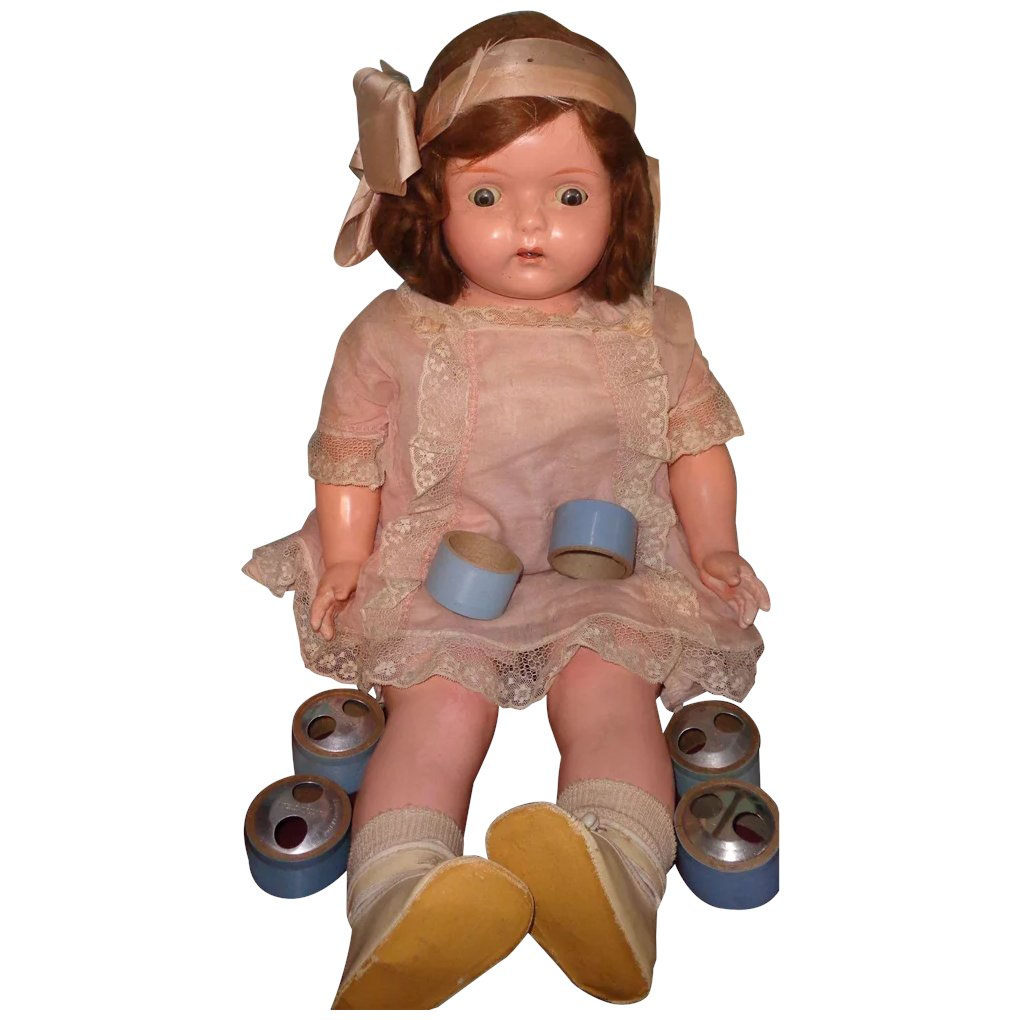
Dolly-Rekord (or Madame
Hendren), Universal Talking Toys Co., 1922
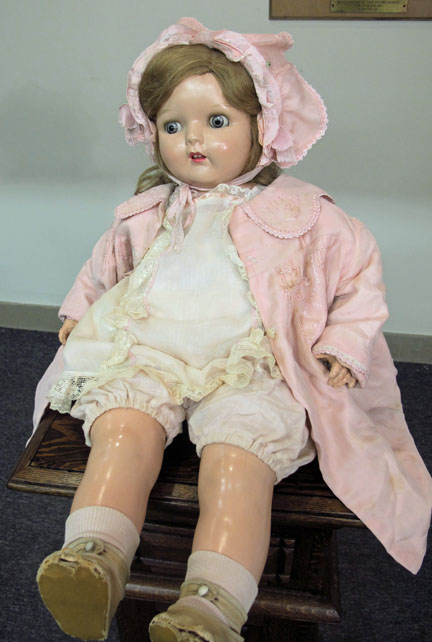
Dolly-Rekord "Madame
Hendren"Christmas gift for Grace Louise Birck, 1924
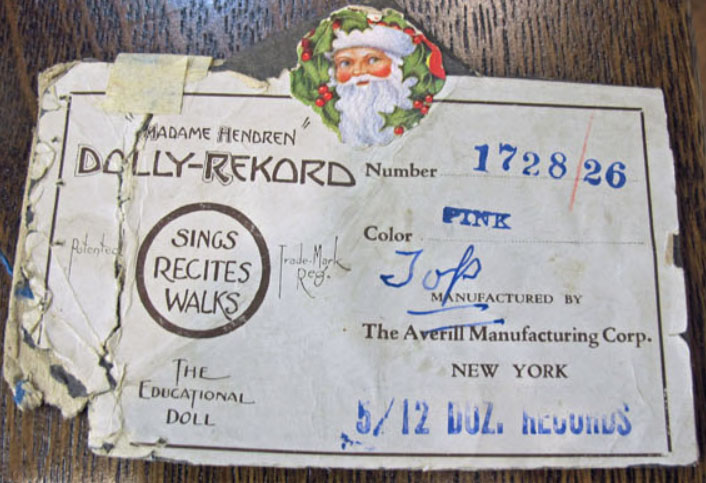
Dolly-Rekord (or Madame
Hendren), Universal Talking Toys Co.
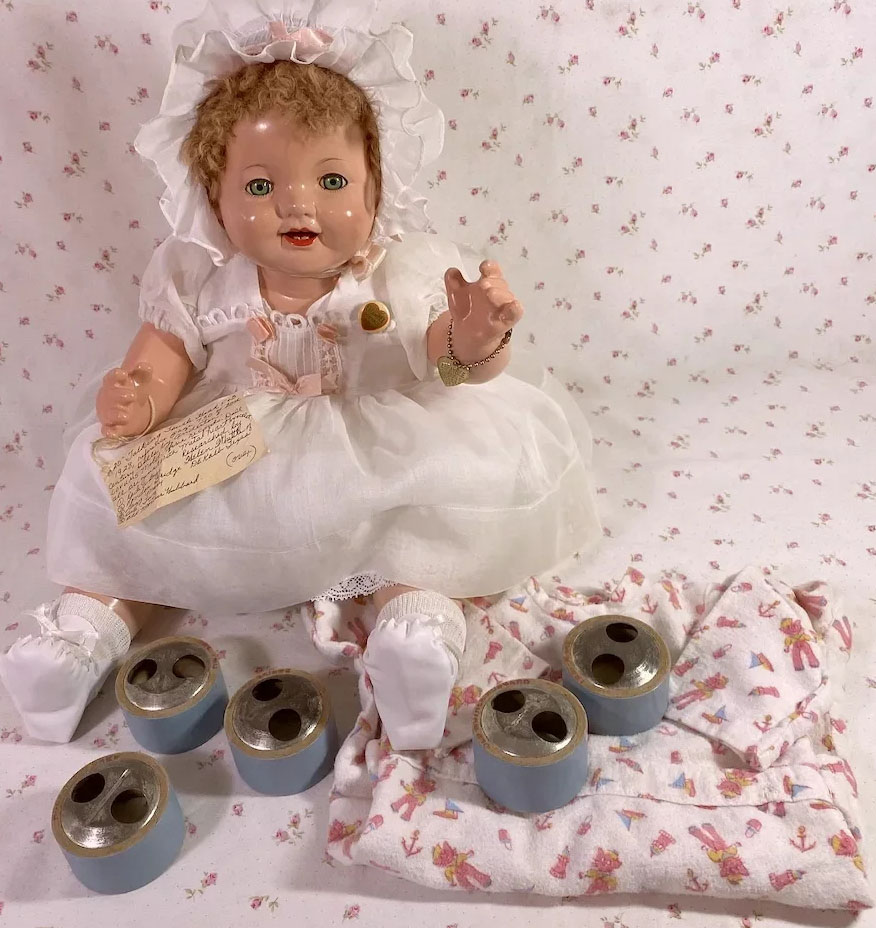
Effanbee 20" Lovums
Composition Talking Phonograph Doll 1928
Better Than Toys.
The Edison Phonograph
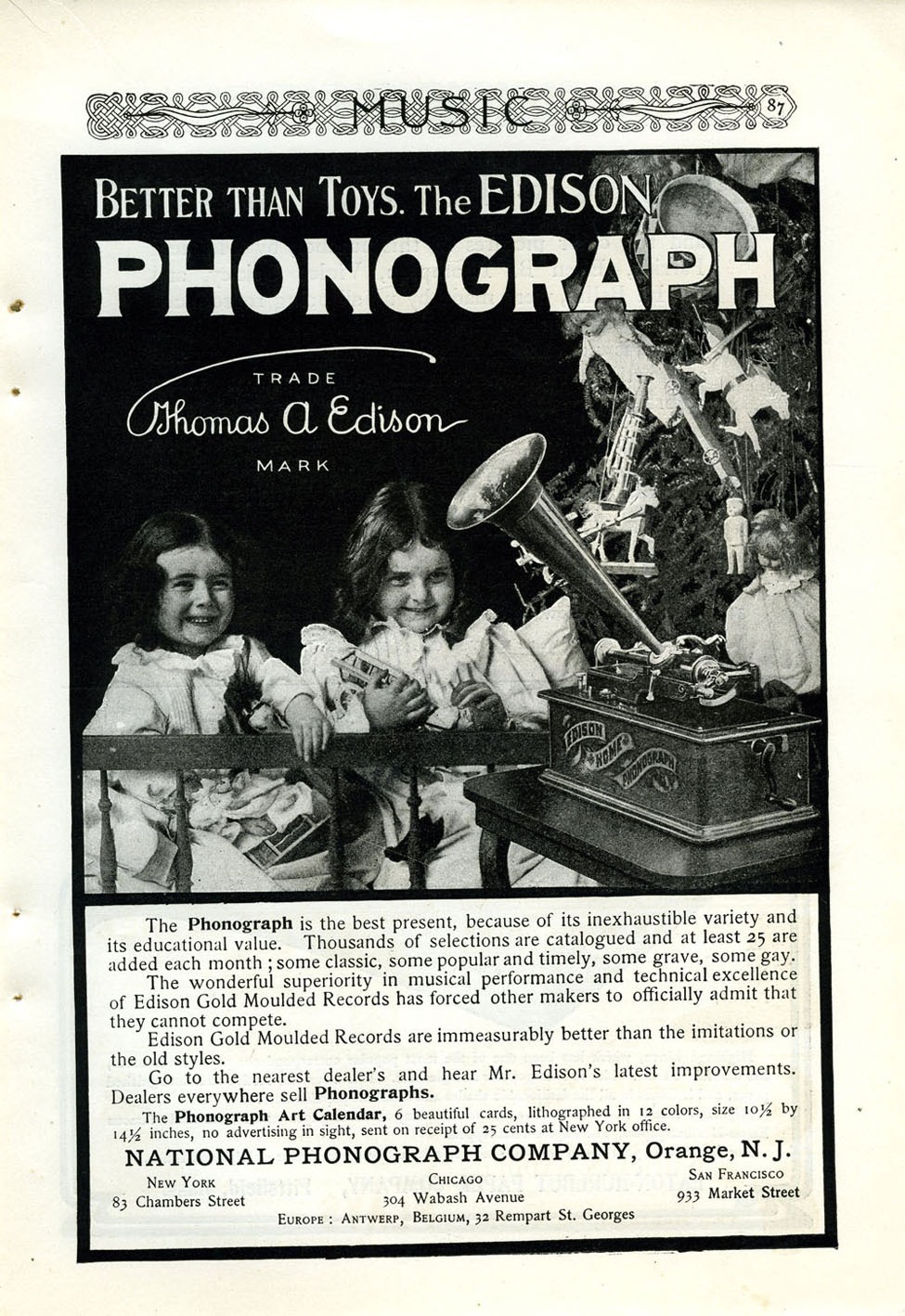
1903
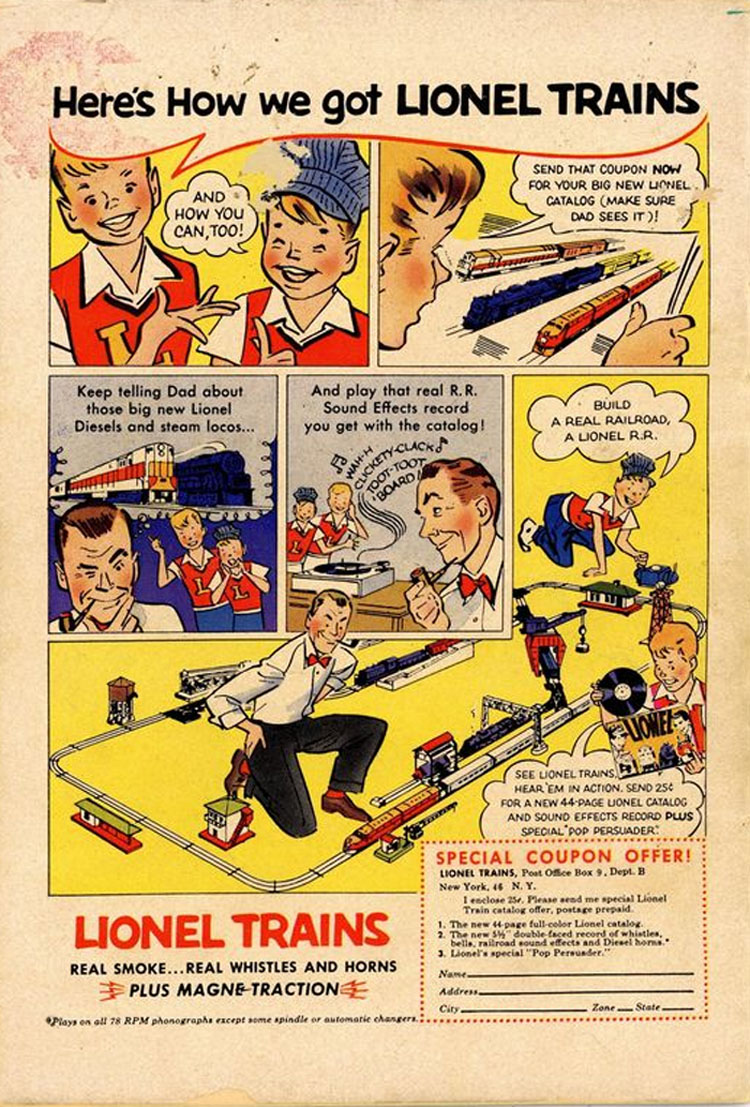
Edison proposed to apply the phonograph
"to make various sounds to steam Toy Engine imitation of exhaust
& whistele [sic]."[2]
Lionel Trains advertisement on back of 1954 comic book which included
special offer for Lionel record of real railroad sound effects.
The Golden Age of
Talking Toys - Mattel 1960 to 1985
Mattel's Chatty Cathy, introduced in
1960 as a doll that talked when its Chatty-Ring was pulled, could
be called the beginning of the Golden Age of Talking Toys. It was
an era that saw the popularity of many dolls, character figures, games,
clocks and other toys that all had a 'phonograph' inside of them which
played a disc record.
As Edison said in his 1878 predictions
regarding the phonograph and 'toys,' "Every species of animal
or mechanical toy--such as locomotives, etc.--may be supplied with
their natural and characteristic sounds."
During this golden age one of the classic
toys for hearing sounds of animals was Mattel's 1965 See 'n
Say® The Farmer Says. This toy allowed children
to choose the animal they wanted to hear: Point the arrow (in this
case the Farmer's arm) towards the animal, pull the string, and listen.
It's one of the toys selected for Phonographia's Talking Toy
Hall of Fame.
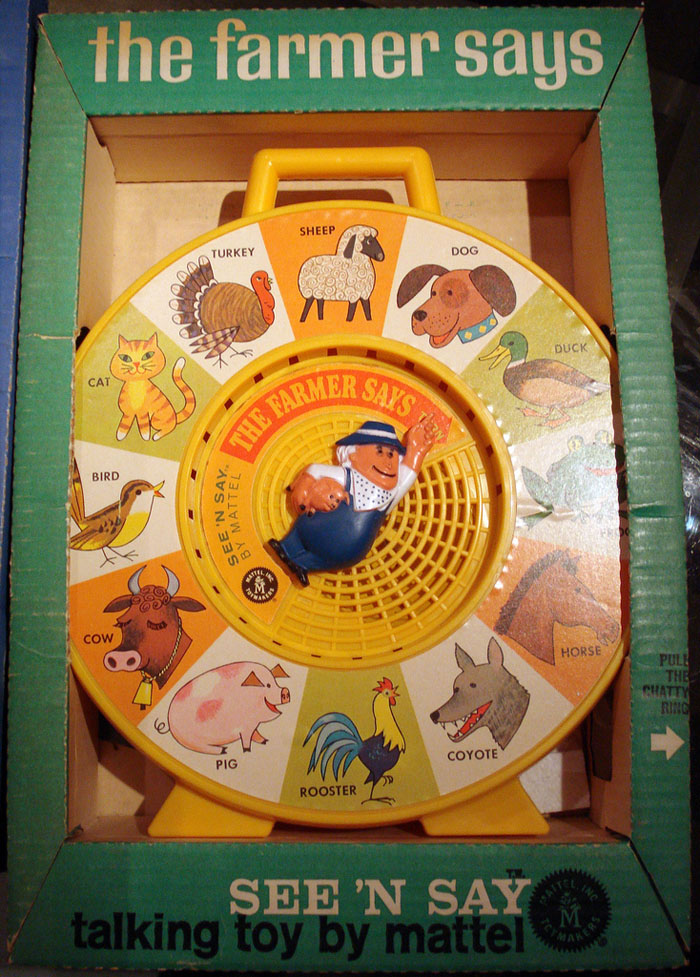
1965 Mattel See 'N
Say The Farmer Says
Mattel's 1965 "The
Farmer Says" toy had an 1880 precedent that was news worthy in
the JACK-IN-THE-PULPIT section of the September 1880 issue of St.
Nicholas magazine. A pull-string toy that "Quacks" like
a duck and cries "Ba-a-a!" like a sheep had been invented
in Germany. The clever inventor called it a "talking book"
and Jack described it as follows:
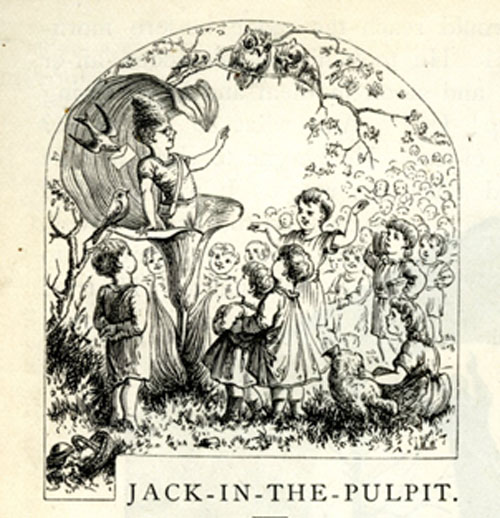
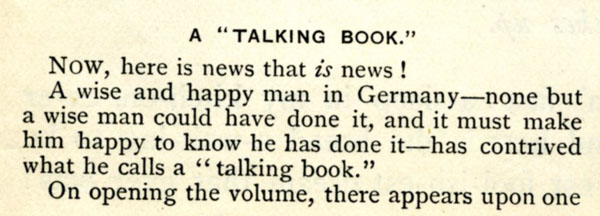
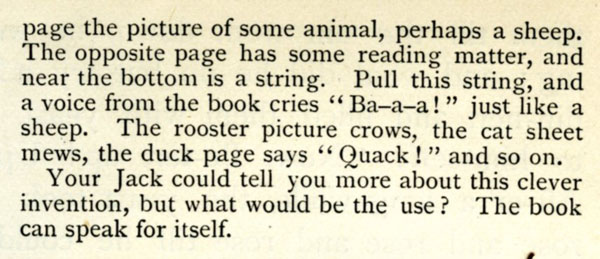
In 1983 Mattel made their last addition
to the Chatty line with its Chatty Patty. Of course this wasn't
the end of talking dolls, nor did it even end talking toys with a
phonograph and disc inside. Another record playing phonograph would
continue to be inserted in some dolls using "Ozen" devices.
The Official Gazette of the United States Patent and Trademark
for September 15, 1987 includes the Japanese Ozen Corporation's patent
for their "Ozen" device which was a "record disc replacing
means for a selective playing type sound reproducing device."
The Ozen device was battery powered
record player and was put inside an assortment of dolls and toys with
its various phrases heard when a button was pressed.
But the replacement of records in toys
and dolls was quickly changing as the golden age talking toys waned.[3]
In 1985 Teddy Ruxpin was introduced
as a talking and animated toy using a cassette tape system. Digital
recordings on chips would soon be used in toys becoming the 'voice'
of talking toys.
Below are two examples of the Golden
Age: the 1960 Chatty Cathy and the 1983 Chatty Patty, 'the final year
Mattel added anything to the Chatty line."
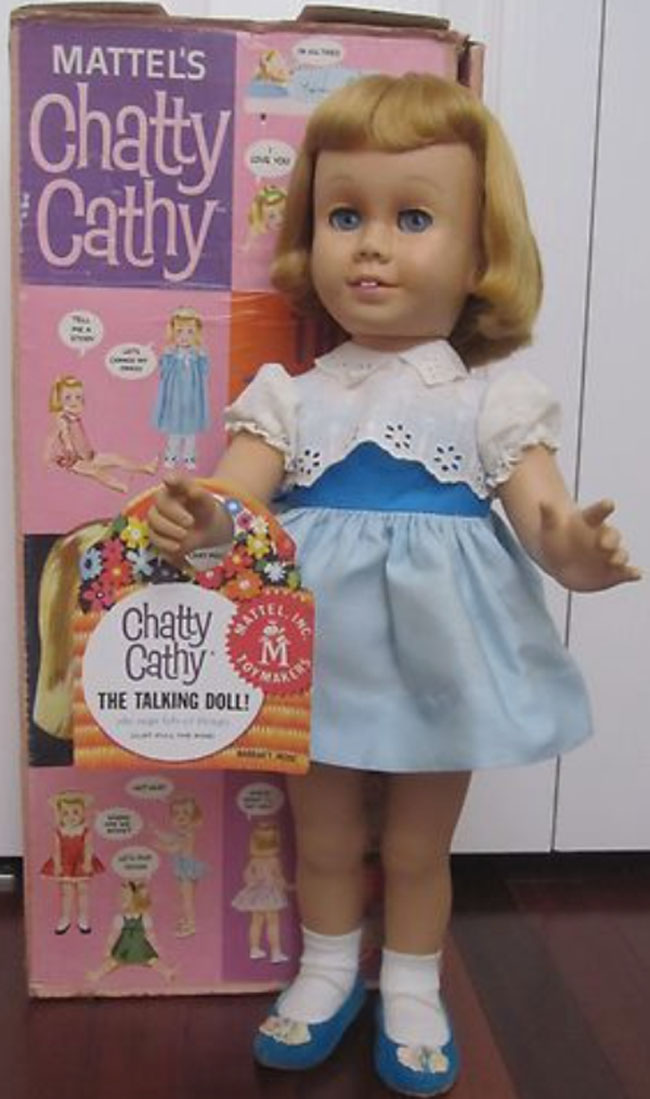
Chatty Cathy, Mattel
1960
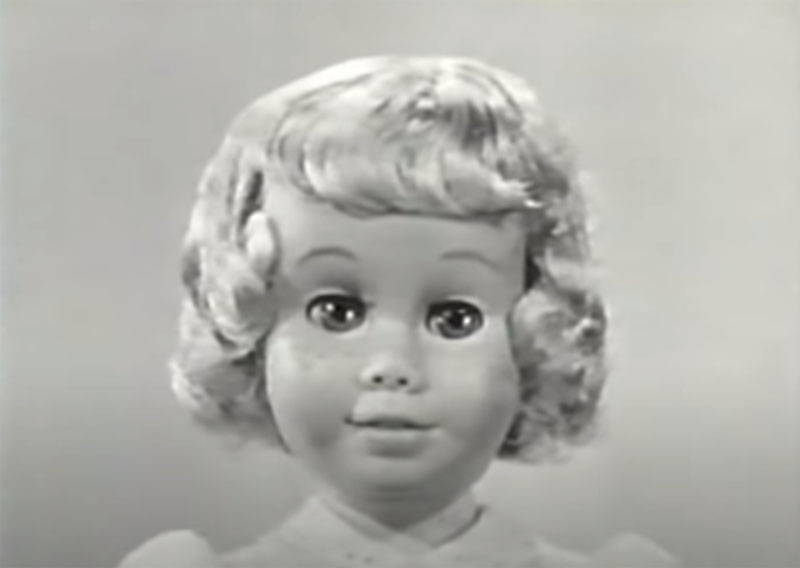
Chatty
Cathy Commercial, circa 1960's
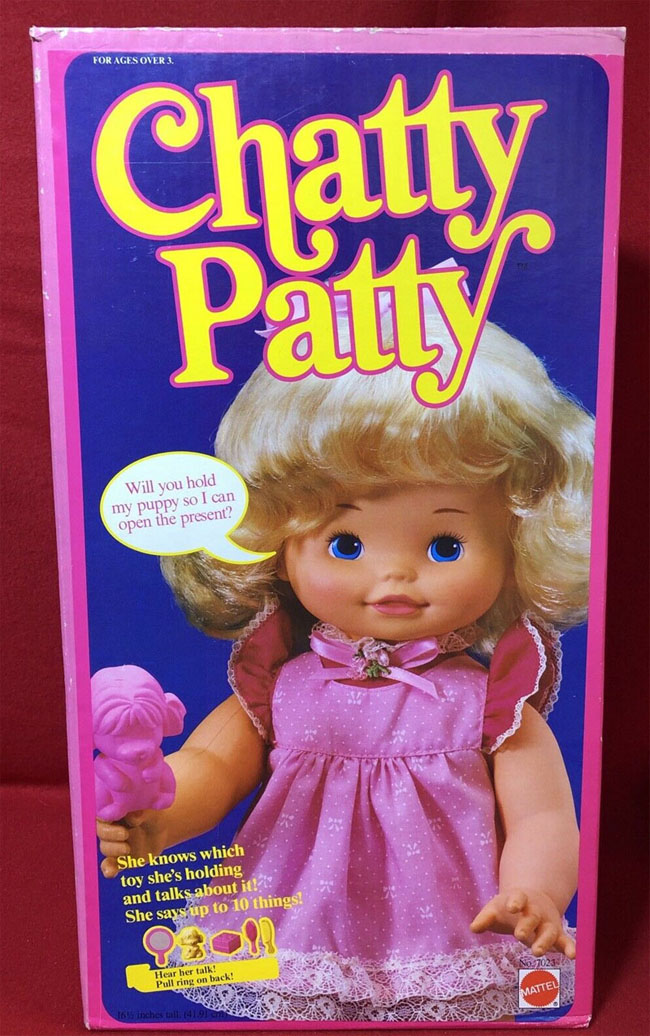
Chatty Patty, Mattel 1983
Talking Clocks
Talking Clocks, i.e., clocks that had
a small record and player inside them, were another popular toy during
this golden age of talking toys. Like the children's phonograph's
of its time these clocks featured popular culture characters that
children recognized from television, cartoons, movies, comic books,
and popular culture.
Visit
Phonographia's Exhibit "Talking Clocks and the Phonograph"
to see an assortment of children's talking clocks from this era.
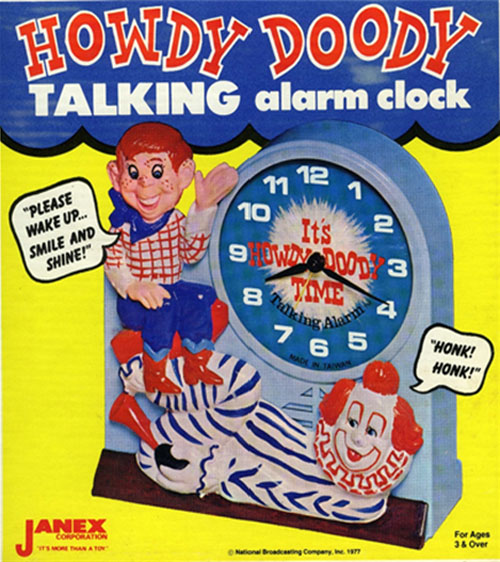
Howdy Doody Talking Alarm
Clock, Janex 1974
Toy Phonographs for
Children
During the 1920's there were a number
of toy phonographs with colorful graphics on their tin bodies made
specifically for the children's market. Visit Phonolithos
for more examples of lithographs on toy phonographs.
For more examples of Children's Phonograph's
see Children's
Phonographs and Popular Culture Characters.
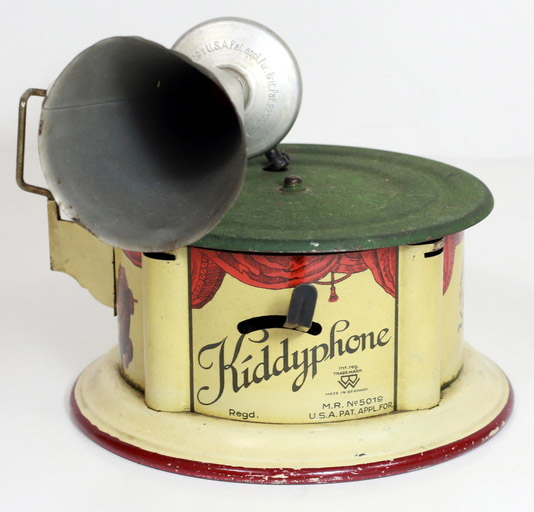
Kiddyphone - Mfg by
Bing - German Toy Phonograph Manufacturer c. 1925

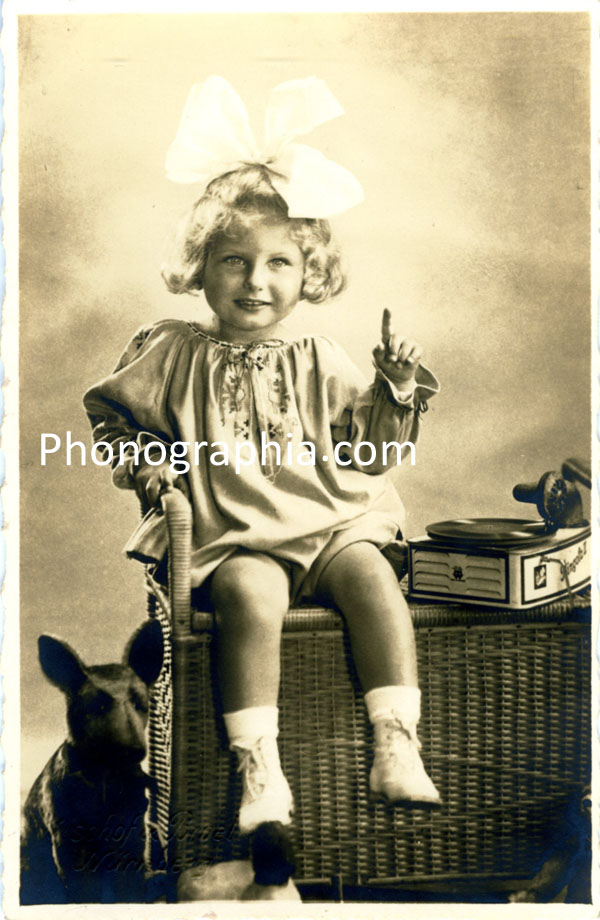
From the 1950's and into the 1990's
phonographs marketed for children used popular culture characters
that were also part of TV's popular culture, for example Howdy-Doody,
Bozo the Clown, Mickey Mouse, Popeye, Winky
Dink, etc. Visit
Phonographia's Exhibit "The Phonograph and Its Future"
to see an assortment of children's phonographs from every era.
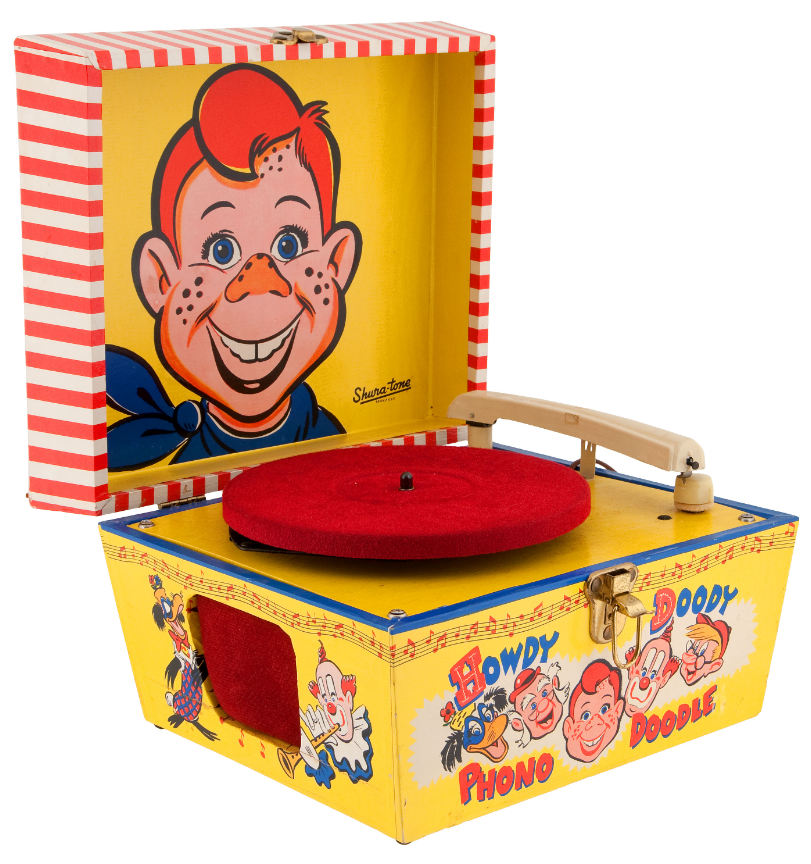
Howdy Doody Phono Doodle,
78 RPM Shura-tone, 1955
Non-Phonograph
Record Talking Toys
Tape recorders would be used by a few
toys to make recordings in real-time, similar to the earliest demonstrations
of Edison's tin-foil phonograph. The 1960 toy Pete the Parrot could
record and play back "everything you say - Talks, Sings Whistles:"
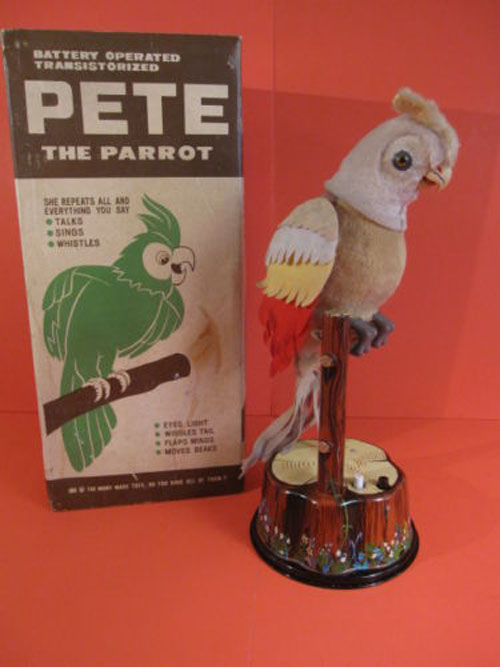
1960 Pete the Parrot
The promotion of Pete the Parrot
echoed the promotion of the 1878 Edison Tinfoil Phonograph: "It
Talks! It Sings! It Laughs!
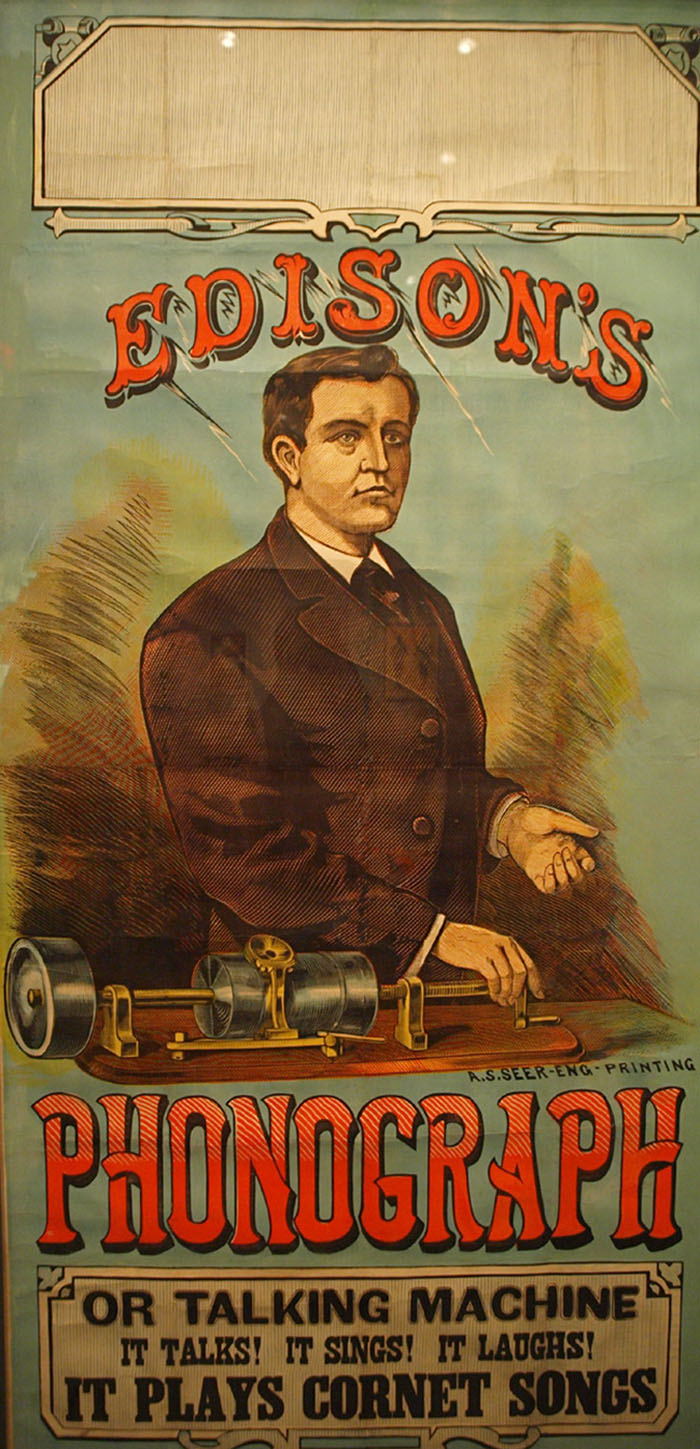
Poster for demonstration
of Edison's phonograph, 1878
Courtesy of National
Museum of American History - Smithsonian Institution
The introduction of the cassette tape
in 1963 made it possible to more easily record on tape. However, as
a children's 'toy' a device like My First Sony Cassette Tape
Recorder was probably the first time children recorded audio for themselves
since previous reel to reel or consumer/home entertainment cassette
player/recorders were not toys or something for the "younger
generation."
Sony "turns
its attention to the Younger Generation"
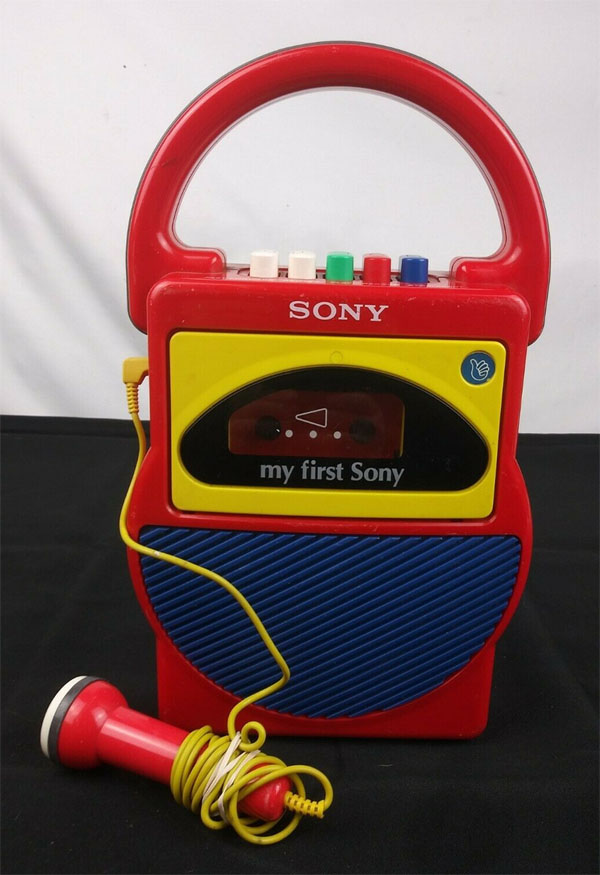
My First Sony
Cassette Recorder TCM-4000S-L2, 1987
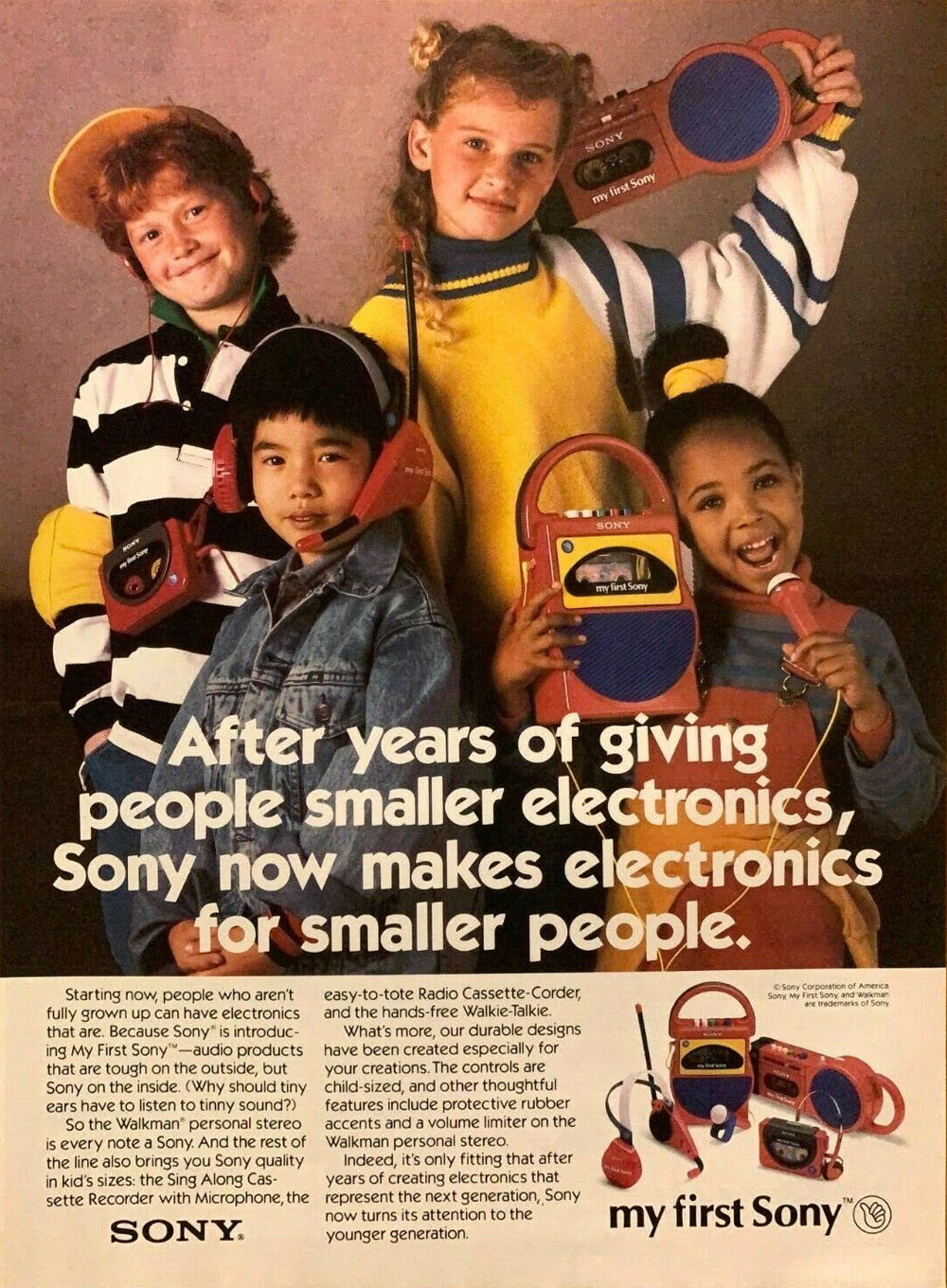
Sony, 1987
Toys designed to record
children's voices using electronic chips came next. In 1997 the Yes!
company made Yakkins™ and a toy called "Joani & Bunny"
that could record your voice, play it back and even "warp"
your voice for a fast of slow voice."
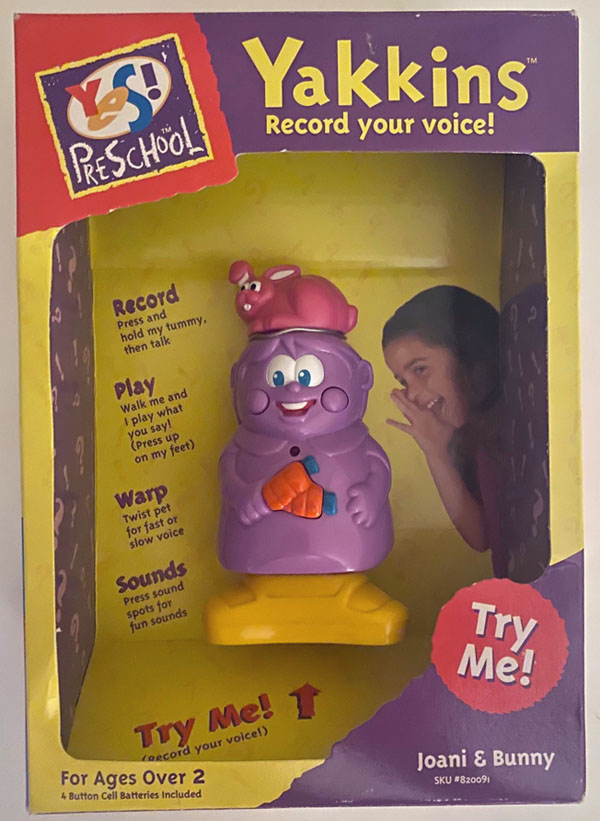
Yakkins by Yes! 1997
During audio's history from 1877 to
the present, few toys were ever made that allowed children to record
their own voices on records other than using their parents'
phonographs (if their phonograph had that functionality). Two toys
that I do know of that recorded on records, however, are the Tomy
Voice-Corder, released in 1972 to allow the creation of 33 RPM
audio postcards, and the 2020 the Record Maker Toy made by
Gakken.
"Tomy Voice-Corder. Released
in 1972, this complicated and pricey toy allowed kids to record
one-off dub plates on colorful plastic-covered cards which could
be sent to friends and family as 33 RPM audio postcards."
(Courtesy of RetroThing.com)
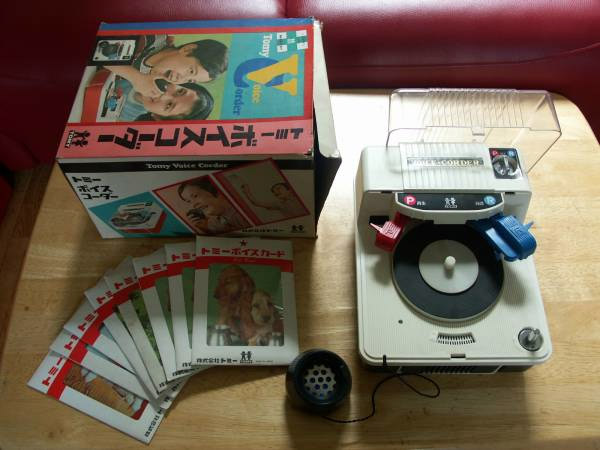
Tomy Voice-Corder.
Released in 1972 (Retrothing.com)
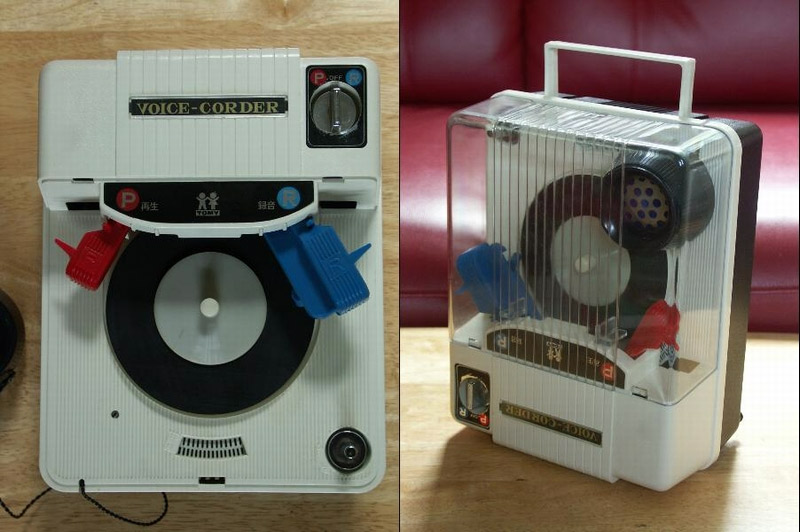
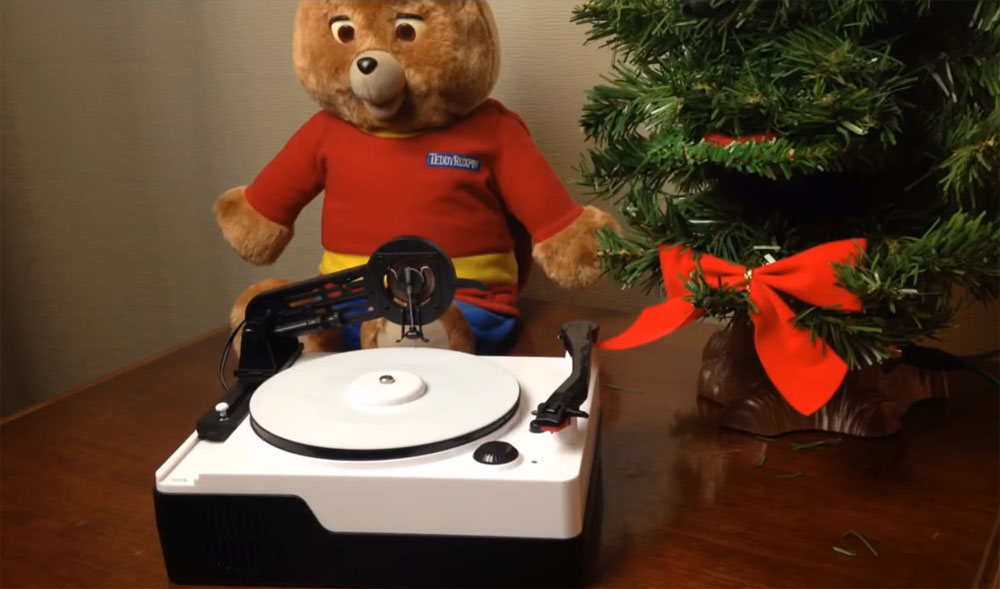
Watch this Databits
2020 Review and Test of the Japanese Gakken Toy Record Maker
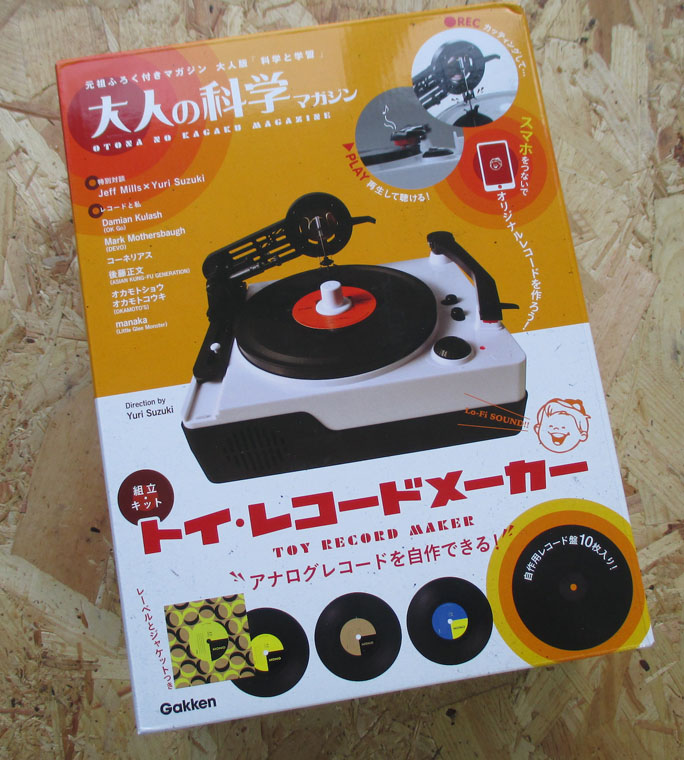
Gakken Toy Record
Maker Kit review
by Juno Daily, December 11, 2020
Not a Toy or a Phonograph,
but where the Future was headed in 1977
"Before Blu-Rays,
SACDs, DVD-HDs, CDs, DATs, and even Laser Discs, there
was a digital recording technology called PCM, which stands for
Pulse Code Modulation." The first commercially-available
PCM recorder, the Sony F-1 sold for $1900 in 1979 and it introduced
the latest era of audio recordings (reviewed in Stereophile
April 18, 1979).
Digital audio files like
WAV, MP3 and other formats were the next step in the 'new' future
for audio recording. As Steven
Stone wrote in Audiophile Review, December 31, 2012, "if
Sony had not developed, released, and had commercial success with
the PCM F-1 recorder, they would have never been in a position to
develop the compact disc (the compact disc format was a co-development
technology between Sony and Philips which prevailed over all competing
disc proposals). To call the Sony PCM-F1 the most significant audio
product of the last half of the 20th century would not, in my humble
opinion, be a stretch."

1981 Sony PCM-F1 (Courtesy
KenRockwell.com)

Phonographia
|




































